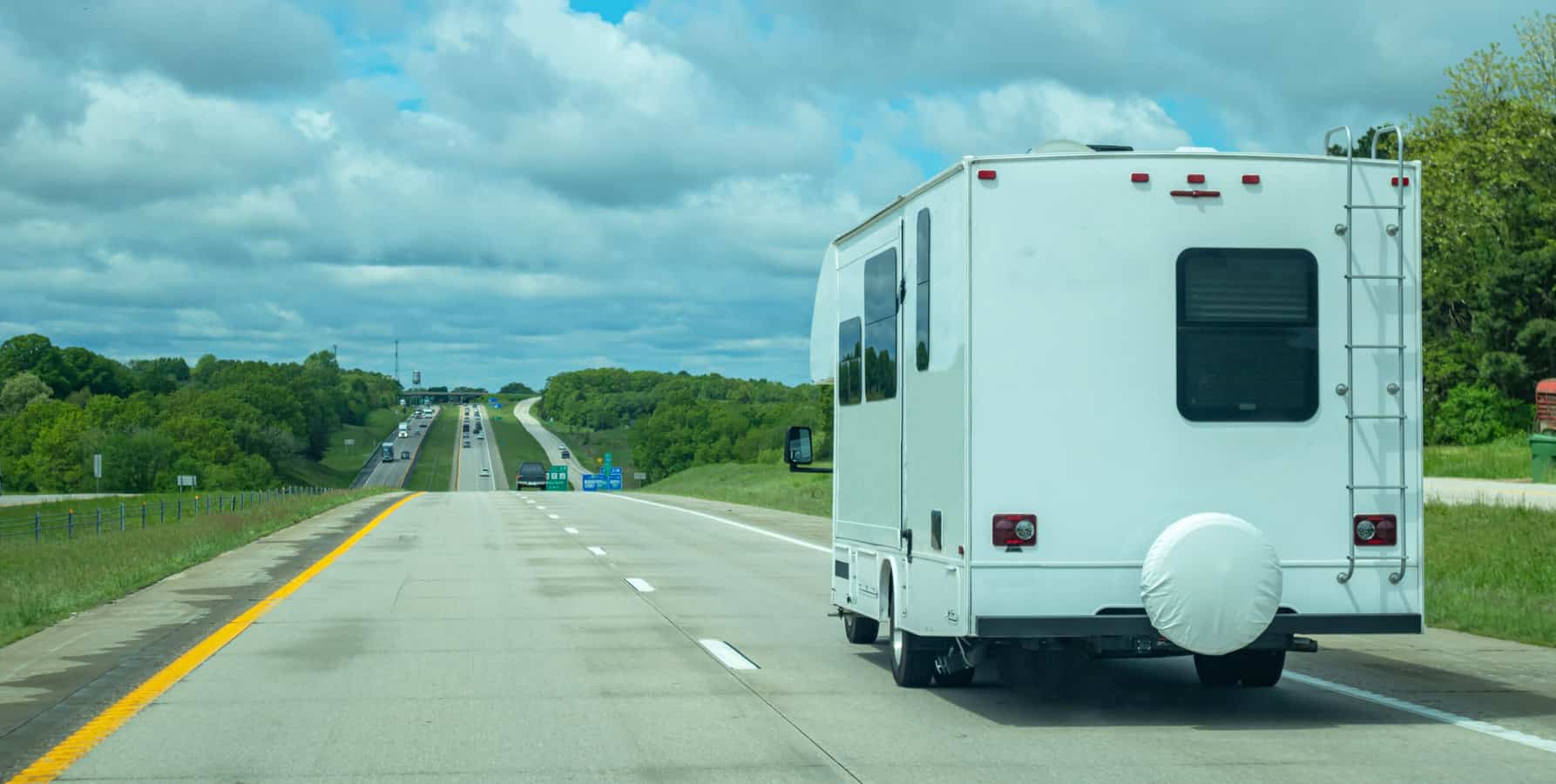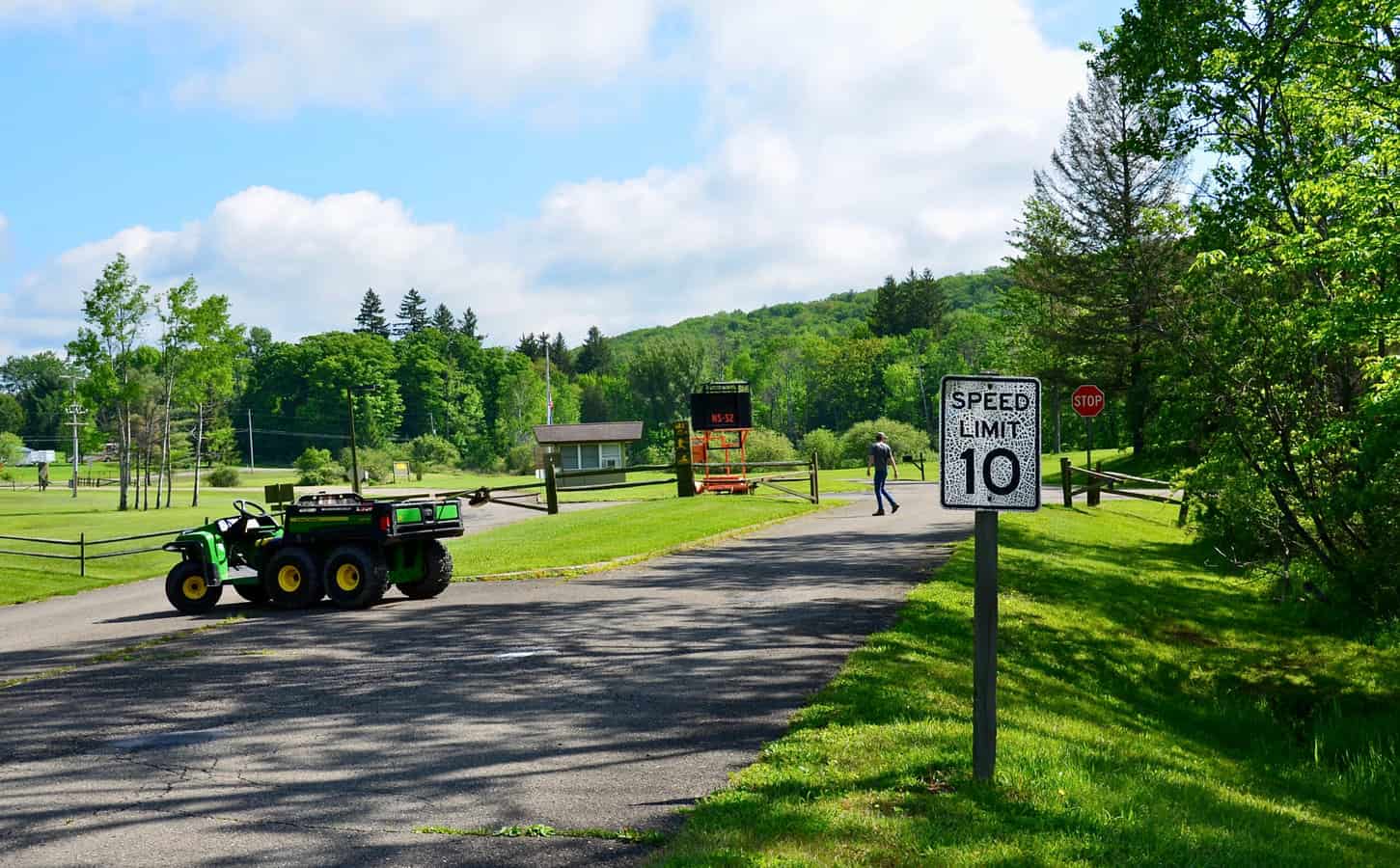
Do Wind Gusts Cause RV Accidents?
Wind gusts are one of the leading causes of RV accidents in the U.S. Whether you drive a motorhome or tow a trailer, navigating through gusty areas can be at least a little harrowing. This is because the wind pushes against the typically tall and decidedly un-aerodynamic walls of the RV, resulting in a swaying, unstable RV, especially while traveling.
When you drive or tow an RV, you’ll even notice some sway with the relatively minor wind gusts caused by a large vehicle, like a semi passing by. If you’re towing a travel trailer, you’ll probably notice it wags from side to side behind the tow vehicle when it’s windy. While the RV and tow vehicle suspension are designed to handle some sway and/or wag, wind gusts still result in a noticeable reduction in handling and can lead to accidents.
Wind speed and RV road safety
Side winds are by far the biggest risk to RV safety. Wind gusts are usually unpredictable and can make the RV difficult to handle, particularly at highway speeds. How high does wind speed have to be to affect RV safety?
The Western Transport Institute sought to find out the exact numbers in a study they conducted in 2006. Here’s what they found: Wind speeds as low as 35 mph can cause RVs to slide on dry pavement. However, 27.5-foot-long travel trailers would slide on the pavement at speeds of only 16 mph and flip when side wind speeds were just 34 mph.
Wind gusts of 34 mph were enough to cause an 11-foot high, 43-foot long motorhome that weighs 15,500 lbs to slide on dry pavement. The study also found that wind gusts of 74 mph were enough to flip the motorhome. Interestingly, wheel diameter had either a minimal effect or no effect on sliding or flipping speeds for motorhomes, campervans, travel trailers, and fifth-wheels.
Sliding and overturn wind speeds for RVs with a 3-foot wheel diameter
| RV Type | Empty Weight (lbs) | Length (feet) | Height (feet) | Overturning Wind Speed (MPH) | Sliding Wind Speed (MPH) |
|---|---|---|---|---|---|
| Motorhomes | 9,000 10,000 12,000 14,000 15,500 22,000 27,000 | 26 30 34 36 43 40 45 | 10 12 12 12 11 12 13 | 80 65 67 70 74 84 81 | 35 31 32 33 34 40 40 |
| Camper Vans | 4500 7000 | 17 20 | 7 10 | 101 80 | 38 35 |
| Travel Trailers | 1800 2200 3300 4000 | 27.5 18 27.5 28 | 9 9 9 10 | 39 53 52 51 | 16 22 22 22 |
| Fifth Wheel Trailers | 4500 5000 6000 8000 | 34 36 31 36 | 10.2 10.5 11 12 | 37 37 41 41 | 21 22 25 25 |
Wind gust speed for sliding and overturn for RVs with a two-foot wheel diameter
| RV Type | Empty Weight (lbs) | Length (feet) | Height (feet) | Overturning Wind Speed (MPH) | Sliding Wind Speed (MPH) |
|---|---|---|---|---|---|
| Motorhomes | 9,000 10,000 12,000 14,000 15,500 22,000 27,000 | 26 30 34 36 43 40 45 | 10 12 12 12 11 12 13 | 79 65 67 70 74 80 83 | 34 30 31 33 33 39 39 |
| Camper Vans | 4500 7000 | 17 20 | 7 10 | 100 80 | 36 34 |
| Travel Trailers | 1800 2200 3300 4000 | 27.5 18 27.5 28 | 9 9 9 10 | 38 52 52 51 | 16 21 21 22 |
| Fifth Wheel Trailers | 4500 5000 6000 8000 | 4500 5000 6000 8000 | 10.2 10.5 11 12 | 37 37 41 40 | 21 21 24 25 |
How to avoid letting wind gusts ruin your vacation
Driving in gusty conditions should be taken seriously and avoided where possible. However, we can’t always avoid wind gusts when traveling. In some areas, we can be cruising down a highway on a lovely day and suddenly encounter a mega gust of wind. As unpredictable as wind gusts can be, knowing what to do to avoid or mitigate your risk of having a wind-related accident will help you avoid damaging your RV and/or ruining your vacation.
Check the wind speed forecast
These days, it’s relatively easy to check wind speed forecasts on routes you plan to travel. The easiest way to do this is by using RV LIFE Trip Wizard. It has an excellent wind speed layer that you can enable in the map layers.
Load your RV carefully
When packing your trailer, try to keep weight towards the front of the RV. Roads are engineered to slope almost imperceptibly towards the shoulders for water drainage. Therefore, whether you have a trailer or a motorhome, packing heavier items on the driver’s side will help mitigate the road slope. Although careful packing helps increase overall RV stability during wind gusts, it won’t make you windproof. Avoid traveling on very windy days whenever possible.
Avoid traveling on windy days
Staying put on windy days might seem sensible. However, if you’ve already reserved a campsite, it can be tempting to try to stay on schedule. Nonetheless, discretion is always the better part of valor. It’s wiser to put temptation aside and stay put until the wind subsides.
Slow down or pull over when it gets windy
If you’re driving and a wind gust suddenly picks up, your RV will be more stable if you reduce your speed. If it’s really windy, find a safe place to pull over and wait until the wind subsides. Remember, your RV has everything you need to be comfortable wherever you are.
Use a weight distribution hitch and stabilizer bars
When towing a travel trailer, using a weight distribution hitch and stabilizer bars can drastically reduce trailer sway and make towing safer in windy conditions.
Upgrade your suspension
Adding an aftermarket suspension upgrade to you tow vehicle or motorhome can significantly increase your RV’s stability, which should help during wind gusts as well. Adding airbags or Sumo springs to your tow vehicle will help it remain stable while towing.





A safety tip you missed is, parking immediately along side/parallel with another vehicle and/or structure will greatly reduce the chance of blow-overs. This is due to the laws of aerodynamics. Vehicle blow-over is not caused solely just from the wind blowing at the side of the vehicle (upwind side), the bow-over is aided by the vacuumed created on the apposing side (downwind side) as the wind passes around the vehicle. Parking alongside & parallel to another vehicle (or structure) will greatly reduce the chance of blow-over as you have eliminated one of the two forces caused by the wind, in doing so. This hold true whether you are permanently parked, or simply taking refuge along a highway offramp/turn-out.